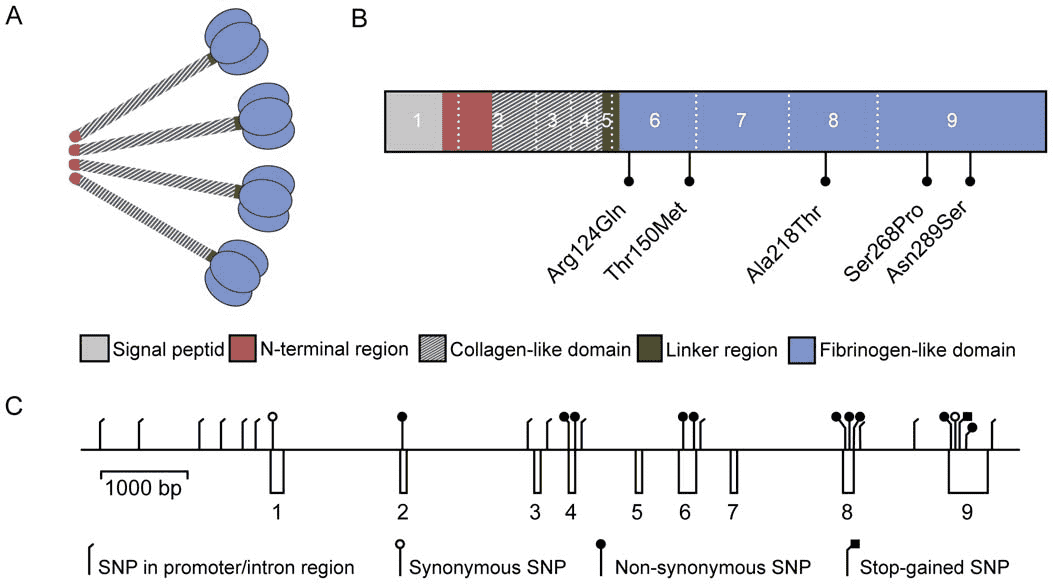Ficolin-1 (M-ficolin)
Ficolins, a component of the complement lectin pathway, are classified as collectins (C-type lectins) and bind carbohydrate present on the surface of microorganisms. There are three ficolins in humans including ficolin-1 (FCN1), ficolin-2, and ficolin-3. FCN1 is synthesized in monocytes and type II alveolar epithelial cells. It is present in secretory granules of human neutrophils, but it is not known which subset of the neutrophils' secretory granules harbors FCN1. Besides, FCN1 functions locally in inflamed lesions following secretion from monocytes, macrophages, and granulocytes.
Previous researches showed that FCN1 is also present in the serum, indicating that it may play a role in systemic immunity. Furthermore, a majority of FCN1 released in response to an inflammatory stimulus such as N-formylmethionine-leucyl-phenylalanine (fMLP) binds to the outer membrane. FCN1 is produced on the cell surface by its fibrinogen-like domain and accepts sialic acid as a ligand. It has demonstrated that the survival rate following infection with Streptococcus pneumoniae is notably lower in Fcnb-deficient mice than in wild-type mice. In a recent study, scientists reported that Fcnb-knockout mice are resistant to collagen antibody-induced arthritis (CAIA) and that the complement system is engaged in the mechanism. In general, these studies suggest that Fcnb plays a crucial role in host defense against bacterial infection, as well as in onset or exacerbation of autoimmune arthritis.
 Fig.1 Complex formation of ficolin (or mannose-binding lectin (MBL)) with MBLassociated serine protease (MASP). (Endo, 2015)
Fig.1 Complex formation of ficolin (or mannose-binding lectin (MBL)) with MBLassociated serine protease (MASP). (Endo, 2015)
Reference
-
Endo, Y., et al. New insights into the role of ficolins in the lectin pathway of innate immunity. International review of cell and molecular biology. 2015, 316, 49-110.
For Research Use Only.

 Fig.1 Complex formation of ficolin (or mannose-binding lectin (MBL)) with MBLassociated serine protease (MASP). (Endo, 2015)
Fig.1 Complex formation of ficolin (or mannose-binding lectin (MBL)) with MBLassociated serine protease (MASP). (Endo, 2015)